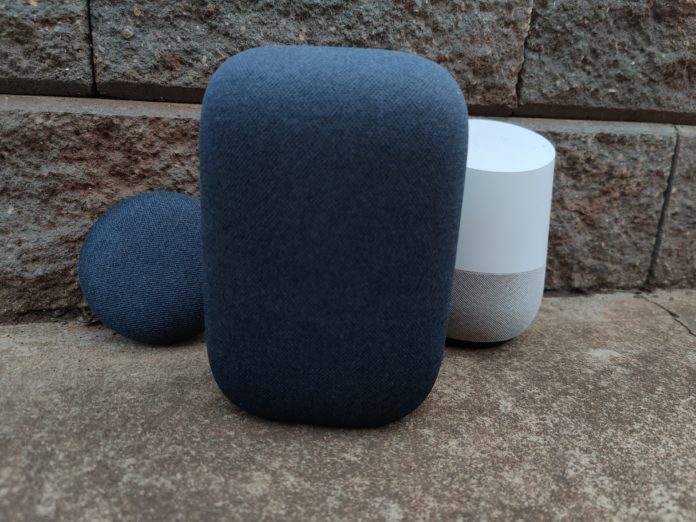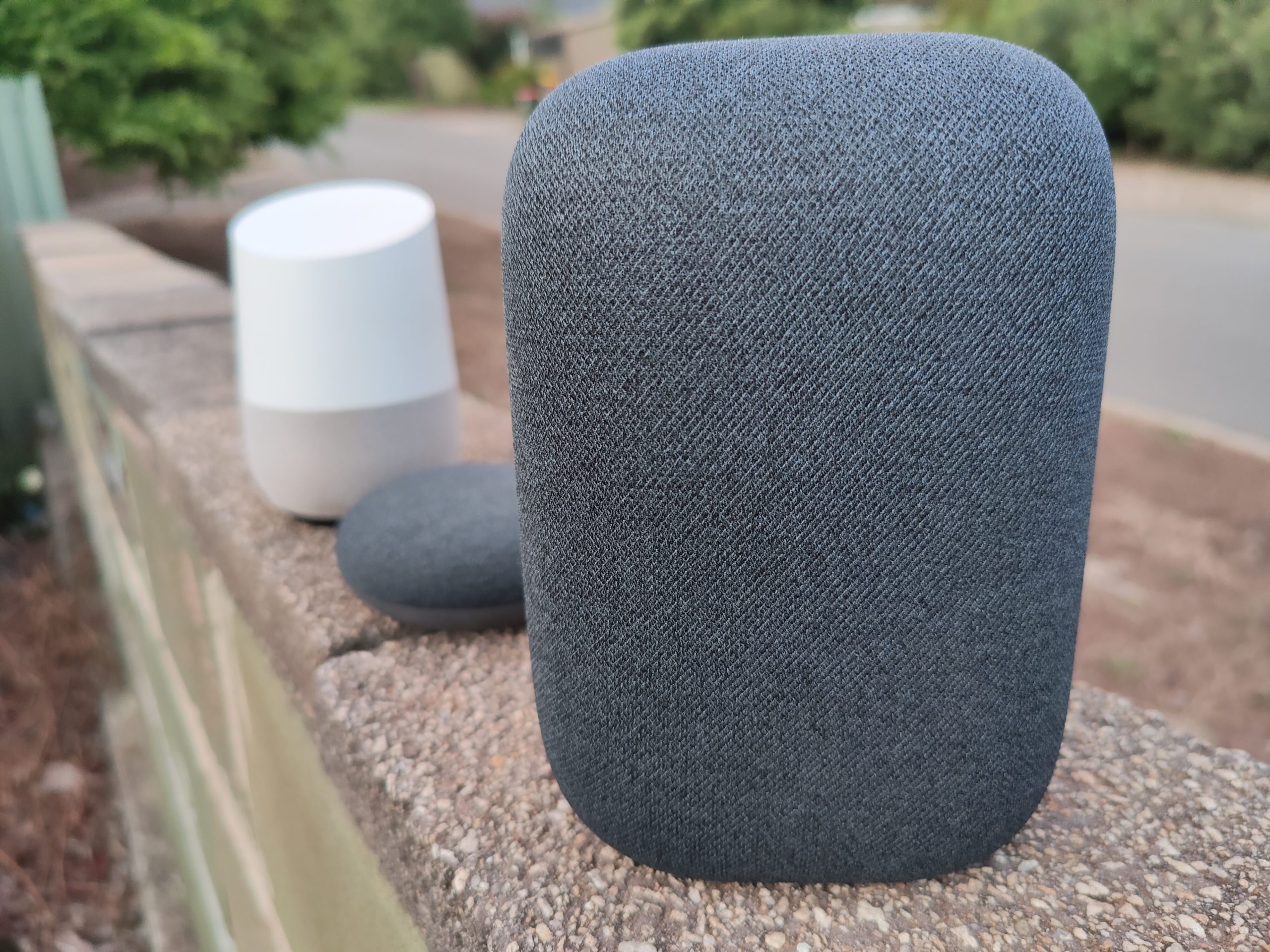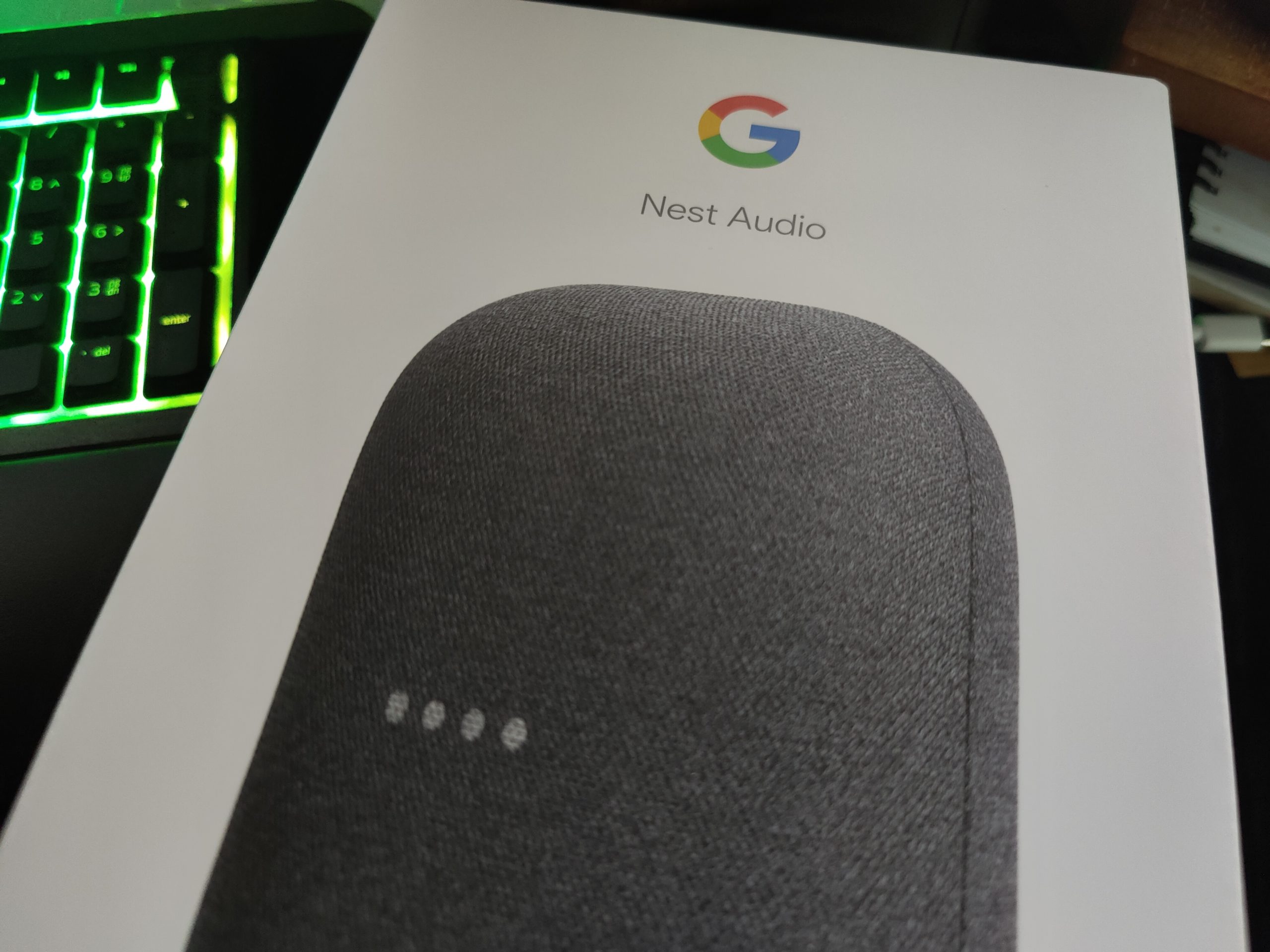We got our first official look at the latest batch of gear from Google last week in a very short overnight event. We’ve seen new Pixel phones, a new Chromecast, the rebranding of Android TV to Google TV and the Nest Audio. After a few generations, the Google-built speakers have come a long way and evolved — with a few faults along the way — to what we’ve now got available.
The hardware
The Nest Audio, is unmistakingly a Google device, with a consistent design, aesthetic and even packaging of the device apparent from the moment you open the box. The familiar look and feel match up with the Nest mini from last year with the recycled cloth skin and physical feel of the speaker.
It’s not just the look that has changed with the Nest Audio, Google has solidified its audio software providing improvements over the original Google Home, and the latest Nest Mini. The new Nest Audio represents the best Google currently has to offer in regards to audio software tuning.
Software and smart stuff
There’s a couple of new features that rate a mention for the Nest Audio in terms of software. The first being automatic tuning of the speaker which — from a very simplistic perspective — uses the microphones in the speaker to tune the device based on what you’re listening to and the space in a similar way to Sonos TruePlay but it’s 100% automated. The theory is that it will boost the bass at lower volumes to give a fuller sound, or dynamically adjust the audio in context to what you’re listening to.
The second advancement with the new generation of Nest speaker is a feature called Ambient IQ. This is particularly useful in some spaces in your home where lots of ambient noise is present. When you trigger the Assistant and noise levels are higher than usual — for me, the coffee machine triggered this feature — the Assistant’s response is at a higher volume to overcome the background noise.
The rest of the features in the Nest Audio have carried over from the previous generations of Google and Nest speakers.
The physical hardware
We’re already mentioned the updated look of the Nest Audio to come into line with the Nest Mini from the last generation. The other notable difference with the look is that the design has gone from cylindrical to a more rounded, rectangle shape in presentation and while it’s a step away from the norm I’ll be honest and say I like it.
When you’re dealing with speakers, there’s the hardware you see and the hardware you hear. When it comes to the sound, the sound hardware has had a huge upgrade and it makes a big difference to the audio quality. I’m going to try to not sound like an advert here: the theory is that the 19mm tweeter is intended to provide nice, clean mid-range audio (with a focus on vocal) and an additional 75mm mid-woofer is supposed to bring the bass.
Combined with the software smarts that are now included, there is a noted improvement in sound and general listening experience but it’s not perfect.
The sound quality
This is a big step forward for Google in affordable, quality audio. While the original Google Home was acceptable, it wasn’t great and if you turned it up distorted quite significantly with some music genres.
Straight out I’ll give Google’s design team a big thumbs up because for the physical size (and cost) of the device, the main criticisms of their previous generations of speakers audio are gone. Except for the Google Home Max — now several years old, significantly larger and more than twice the cost — this is the first time that Google has built a capable speaker with Assistant built-in versus a smart device with a speaker in it.
The Nest Audio delivers pretty solid audio across the mid to high-range sounds and depending on both volume and context, the bass. There’s plenty of power in the speaker too, which produces not just good sound but sound that can fill a room even with background noise at parties or in noisy environments. The clarity needed here is because there are a number of times when I was listening to music where the sound quality is great and full. Other times though when the bass came across as hollow and lacking punch.
If you’re listening carefully and turn the volume up quickly, you can hear the automated tuning kick in. Given the notes in the press release:
Bass: Our approach to bass focuses on hitting those low notes clearly, rather than just over-emphasizing a certain range. Listen across all volumes, including those that you would use the most.
it’s easy to understand what’s occurring, as the volume goes up vocal and high range sounds do. Bass on the other hand doesn’t gain much which is almost certainly to avoid the distortion that previous speakers suffered at high volume. In our testing time so far, the sweet spot seems to be at about 60% volume to get a full and rounded sound. If you’re looking for the best sound possible though, there are better audio options — eg. Sonos speakers or even the Home Max — but keep in mind you pay for them and their footprint is bigger than the Nest Audio.
The Nest experience
The Nest Audio is a big step forward for the increasing Nest ecosystem. It’s a consolidation of branding, an improvement on the audio and a pretty nice looking device generally. The Assistant experience is steadily evolving with more hardware and automation supported on a regular basis independently of the Nest hardware.
At a cost of $149.00, the Nest Audio is a very worthwhile additional piece of hardware to your smart home. That could be to replace aging hardware, to strengthen the coverage of Assistant through your home or to upgrade — thanks to the smart features — and move other speakers around your home.
If you’re looking for a significantly improved audio experience and a more modern look, then the Nest Audio is a great step forward. I’d be more than happy to drop $150 of my own money and will happily recommend to friends and family to do the same if they’re after more Google goodness through their home.
Disclosure Statement
Google has not requested return of the hardware













